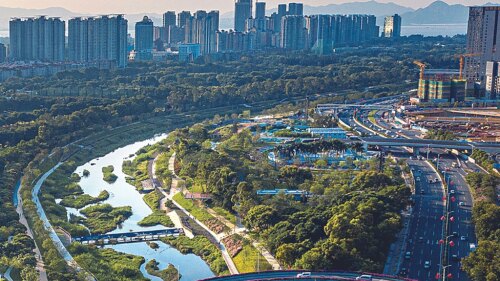Happiness and access to viable transit tend to go together, according to new research by Jason Cao, a transportation expert with the University of Minnesota.
That finding might come as a surprise to commuters who pack themselves onto early-morning trains. However, the results of Cao’s research are clear: people who live close to Minneapolis’s new Hiawatha light-rail line are significantly more satisfied with their transit choices—and with life in general.
Related Content: Rail-Centric Construction Gets Back on Track | Shifting Suburbs | ULI Minnesota Event on Streetcar Funding
Cao mailed a ten-page survey to more than 1,000 people living in five areas in the Minneapolis area. One of the five areas is a traditional urban area along Hiawatha Avenue in south Minneapolis, within a half mile of the light-rail line. The other areas are demographically similar urban and suburban areas with no light rail.
Sociologists and psychologists have spent a lot of time figuring out how to turn happiness into something they can count. “I used a scale developed by a psychologist,” says Cao. He asked his respondents to rate on a scale of one to seven how strongly they agreed with statements like “In most ways my life is close to my ideal,” and “So far I have achieved the important things I want in my life,” and “If I could live my life over again, I would change almost nothing.”
Other statements dealt with travel: “I am completely satisfied with my daily travel,” and “When I think of my daily travel, the positive aspects outweigh the negative,” for example.
Most respondents said they were to some extent satisfied with both their travel and their lives. But residents close to the light rail reported being significantly more satisfied with both. The difference was not huge—just a few tenths of a point on Cao’s seven-point scale on average—but it was consistent and clear enough to be statistically significant.
“If you are isolated—if you cannot go where you want to go—that is going to affect your quality of life,” says Cao.
The people who ride the Hiawatha Line also benefit from the ability to do useful things while they ride the light rail, which they could not do if they were driving. “You can use the time to read your paper and talk to your friends,” he says.
Cao describes the five areas that he studied as largely middle class, ranging from older urban areas to suburban areas. In all five areas, more than 80 percent of the people who answered Cao’s survey are homeowners—so they aren’t necessarily dependent on mass transit. Instead, having another transit option gives them greater flexibility.
Hiawatha’s Success
The Hiawatha Line opened in 2004 and runs for 12 miles (19 km) between downtown Minneapolis and the Mall of America in Bloomington, Minnesota. There are 19 stations along the way, including a stop at the Minneapolis–Saint Paul International Airport. The line has been very popular so far: it carried 10.5 million riders in 2012—running almost 30 percent ahead of the ridership projected when the line was planned.
Residents still call the light rail “Hiawatha,” even though the official name of the line has been changed to the “Blue Line,” as officials plan to make Hiawatha just one piece of a larger light-rail network. Work will finish in 2014 on the METRO Green Line that will link Minneapolis to downtown Saint Paul.
Currently, the Hiawatha Line is the only light-rail line in the Twin Cities, though it already accounts for 12 percent of the region’s mass transit ridership, according to Metro Transit, the local transit agency. Cao’s report speculates that the impact of additional transit choices may grow with the system: “The impact may be larger for a system with an extensive rail network such as Washington Metro and San Francisco BART, presumably because an extensive system offers greater accessibility benefits.”





